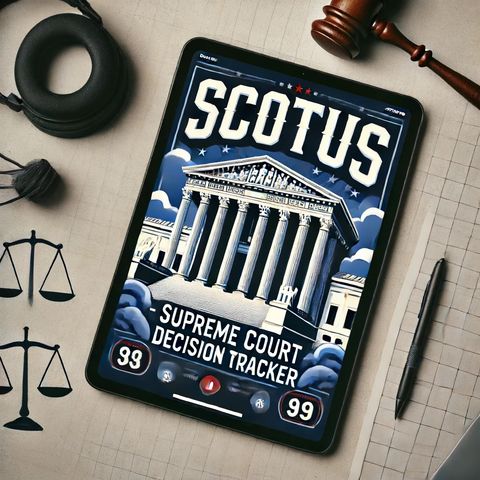Supreme Court's Pivotal Role in Shaping Federal Policy and Environmental Regulations

Sign up for free
Listen to this episode and many more. Enjoy the best podcasts on Spreaker!
Download and listen anywhere
Download your favorite episodes and enjoy them, wherever you are! Sign up or log in now to access offline listening.
Description
The Supreme Court of the United States has been at the center of significant judicial scrutiny as it tackles controversial decisions that reverberate across the legal and political landscape of...
show moreA recent case that highlights the Supreme Court’s influence on federal legal proceedings involves Topekan Will Pope. His trial, connected to charges from the January 6 Capitol riot, was delayed following a Supreme Court decision concerning the treatment of obstruction charges. This decision is critical as it potentially sets a precedent that could influence the outcome of numerous other cases involving defendants charged with similar offenses during the Capitol breach. The specifics of the obstruction charge, that is, what constitutes an obstruction of an official proceeding, and whether the actions of defendants like Pope meet such criteria, are central to these judicial deliberations.
Furthermore, the Supreme JCourt is seen as positioning itself to impose more stringent limitations on the authority of federal agencies, particularly concerning environmental regulation and the conduction of environmental impact reviews. This was spotlighted in a recent analysis which suggests that the Court could be leaning towards enhancing judicial oversight over agency decisions, limiting their ability to perform assessments related to environmental impacts without facing increased scrutiny from the courts.
This limitation on agency authority emerged from cases like that involving the Loper, which critically influence how agencies participate in environmental governance. The rulings from the Court have sparked a debate about the balance of power between the federal government and judiciary and raised questions about the future efficacy of federal environmental protections.
Additionally, critiques of the Supreme Court's direction under its current conservative majority have been vocal, with some commentators arguing that the Court exhibits 'hubris' by significantly curtailing the power of both Congress and the presidency. An article by the Sierra Club articulates this perspective, suggesting that despite these judicial constraints, avenues still remain for federal action on climate issues, albeit under the more complicated judicial landscape shaped by the Supreme Court's recent decisions.
These developments reflect a broader theme in the Court’s trajectory - asserting its influence over significant areas of public policy and law, from environmental regulation to the repercussions of large-scale public disturbances like those witnessed on January 6. These actions illustrate the ongoing and evolving debate surrounding the separation of powers in the U.S. and how judicial review shapes federal policy implementation. As such, the Supreme Court continues to be a pivotal player in determining the boundaries of legal and governmental power in the United span>States.
Information
| Author | QP-4 |
| Organization | William Corbin |
| Website | - |
| Tags |
Copyright 2024 - Spreaker Inc. an iHeartMedia Company
